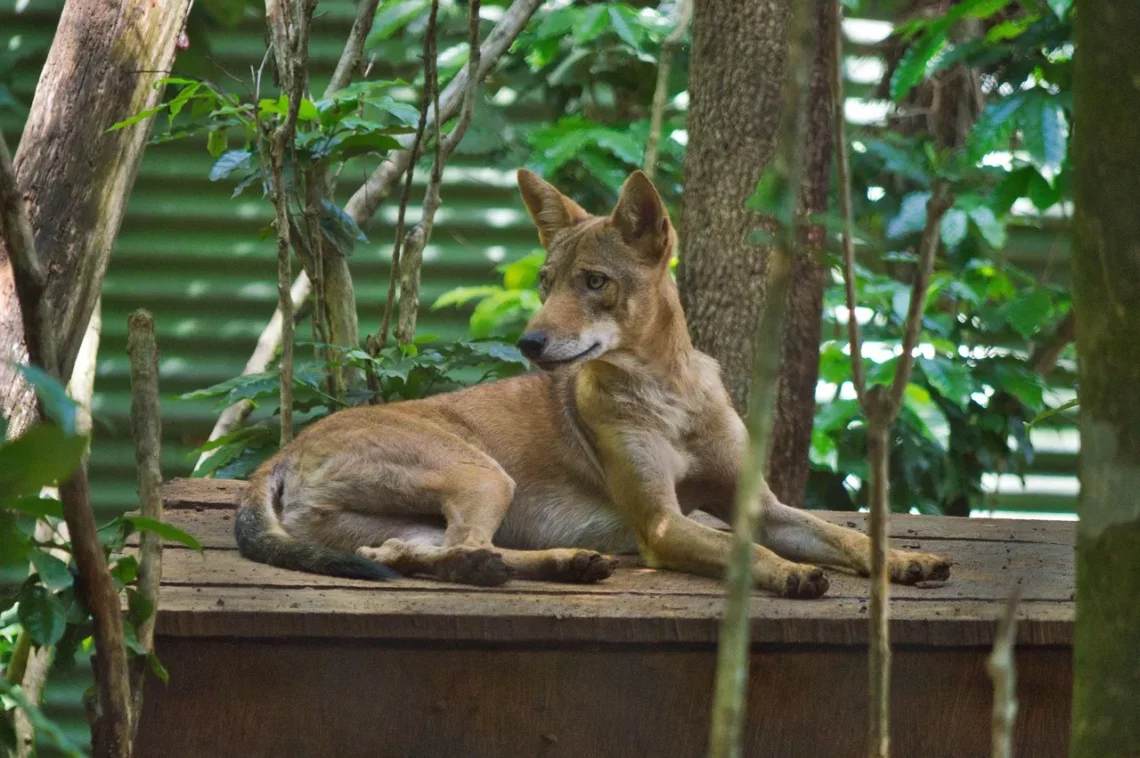
The Enigmatic Glow of Coyote Eyes at Night
The night unfolds a mysterious tapestry, woven with shadows and whispers that dance in the dim light. Among the many creatures that roam the nocturnal landscape, few evoke as much intrigue as the coyote. With their keen senses and adaptive nature, these animals navigate the darkness with a grace that captivates both the curious observer and the seasoned naturalist. Perhaps one of the most striking features of coyotes during the night is their eyes, which seem to emit an enigmatic glow under the moonlight.
This phenomenon, often attributed to the structure of their eyes and the way light interacts with them, adds an air of mystique to these wild canids. As we delve deeper into the world of coyotes, we uncover not only the biological underpinnings of their luminous gaze but also the cultural significance of these creatures in various folklore and their role in the ecosystem. The nocturnal environment serves as a backdrop for understanding the adaptations that allow coyotes to thrive and even flourish in diverse habitats.
Through the lens of science and storytelling, we begin to appreciate the multifaceted existence of coyotes, revealing the layers of meaning that their glowing eyes represent in the realm of wildlife and beyond.
The Biology Behind the Coyote’s Eyes
Coyotes possess a unique adaptation in their eyes that enables them to see well in low-light conditions. This is primarily due to a layer of tissue located behind the retina called the tapetum lucidum. This reflective layer acts like a mirror, bouncing light that passes through the retina back into the eye, giving the coyote a second chance to absorb that light. This adaptation is not exclusive to coyotes; many nocturnal animals have similar structures that enhance their night vision.
The tapetum lucidum contributes to the glowing effect that is often observed at night when light hits the coyote’s eyes. This glow can vary in color, often appearing as a bright green or yellow hue, depending on the angle of the light and the individual animal’s genetic makeup. The intensity of this glow can also be influenced by the surrounding environment; for instance, the glow may appear more pronounced against a dark backdrop, such as a moonlit desert or a dense forest.
Moreover, a coyote’s eyes are designed for motion detection, allowing them to spot potential prey or threats even in the dark. Their large pupils maximize the amount of light entering the eye, which is crucial for survival in their natural habitat. This ability to see well at night, combined with their other keen senses, makes coyotes formidable hunters and adept at navigating their surroundings.
Understanding the biology of coyote eyes not only highlights the marvels of natural evolution but also sheds light on the species’ adaptability. In a world where many animals struggle to survive, the coyote stands out as a testament to the power of adaptation and resilience in the face of changing environments.
Cultural Significance of Coyotes in Folklore
Throughout history, coyotes have held a prominent place in the folklore and mythology of various cultures. Often depicted as tricksters, these cunning creatures embody a duality of characteristics—both clever and mischievous. Many Native American tribes feature the coyote in their stories, attributing to it a range of symbolic meanings that reflect the complexities of life.
In some traditions, the coyote is seen as a creator figure, a being that brings forth life and teaches important lessons about survival and morality. In these stories, coyotes often outsmart other animals, showcasing their intelligence and adaptability. This trickster archetype serves as a reminder of the importance of wit and resourcefulness, traits that are essential for navigating life’s challenges.
Conversely, the coyote’s cunning nature can also lead to cautionary tales, warning against hubris and the consequences of deceit. These stories often reflect broader themes within human experience, exploring the balance between wisdom and folly, and the lessons learned from both.
As the coyote’s enigmatic eyes glow in the darkness, they symbolize the mystery of the natural world and the lessons it imparts to those who are willing to listen. The rich tapestry of coyote-related folklore serves not only to entertain but also to educate, emphasizing the interconnectedness of all living beings and the wisdom that can be gleaned from observing nature.
Coyotes in the Ecosystem: Role and Importance
Coyotes play a crucial role in maintaining the balance of their ecosystems. As opportunistic feeders, they have a varied diet that includes small mammals, birds, fruits, and carrion. This dietary flexibility allows them to thrive in diverse habitats, from deserts to urban areas, adapting their behavior based on available resources.
By preying on rodents and other small mammals, coyotes help regulate populations of these species, preventing overpopulation that could lead to habitat degradation. This natural form of pest control is vital for maintaining ecological balance, ensuring that ecosystems remain healthy and resilient.
Moreover, coyotes are also scavengers, contributing to the cleanup of the environment by consuming dead animals. This scavenging behavior not only reduces waste but also supports nutrient cycling within ecosystems. The presence of coyotes can lead to increased biodiversity, as their hunting and scavenging activities create opportunities for other species to thrive.
In urban environments, coyotes have adapted remarkably well, often becoming a common sight in suburban neighborhoods. Their ability to coexist with humans has sparked discussions about wildlife management and urban planning. Understanding the role of coyotes in these settings is essential for fostering a harmonious relationship between humans and wildlife.
As we reflect on the importance of coyotes within ecosystems, it becomes clear that their enigmatic presence—symbolized by their glowing eyes—serves as a reminder of the intricate web of life that surrounds us. Protecting these remarkable creatures and their habitats is crucial for preserving the delicate balance of nature.
Observing Coyotes: A Guide for Enthusiasts
For those interested in observing coyotes in their natural habitat, patience and respect for wildlife are essential. Coyotes are generally wary of humans and prefer to avoid direct contact. The best opportunities for observation often come during dusk or dawn, times when these animals are most active.
When venturing out to observe coyotes, it’s important to choose locations where they are known to inhabit. National parks, wildlife reserves, and open spaces near urban areas can be ideal spots for coyote sightings. Bringing binoculars can enhance the experience, allowing for a closer view of these fascinating creatures without disturbing them.
Maintaining a respectful distance is key; approaching too closely can stress the animals and disrupt their natural behaviors. Observers should also be aware of their surroundings, as coyotes are skilled at blending into their environment. Staying quiet and still can increase the chances of witnessing their unique behaviors, such as hunting or social interactions.
In addition to direct observation, educating oneself about coyote behavior and ecology can enrich the experience. Understanding their vocalizations, social structures, and hunting strategies can provide valuable insights into their lives. Many resources, including books, documentaries, and local wildlife organizations, offer information that can enhance one’s appreciation for these enigmatic creatures.
Observing coyotes in the wild offers a glimpse into a world that often goes unnoticed. Their glowing eyes at night serve as a reminder of the beauty and complexity of nature, inviting us to explore and engage with the wild spaces that surround us.
In conclusion, the enigmatic glow of coyote eyes at night captures the imagination and invites exploration into the fascinating world of these adaptable creatures. Through understanding their biology, cultural significance, ecological roles, and observational opportunities, we come to appreciate the depth and richness of life that coyotes represent.
This article is not intended as medical advice. For any health-related concerns, individuals should always consult a qualified healthcare professional.




